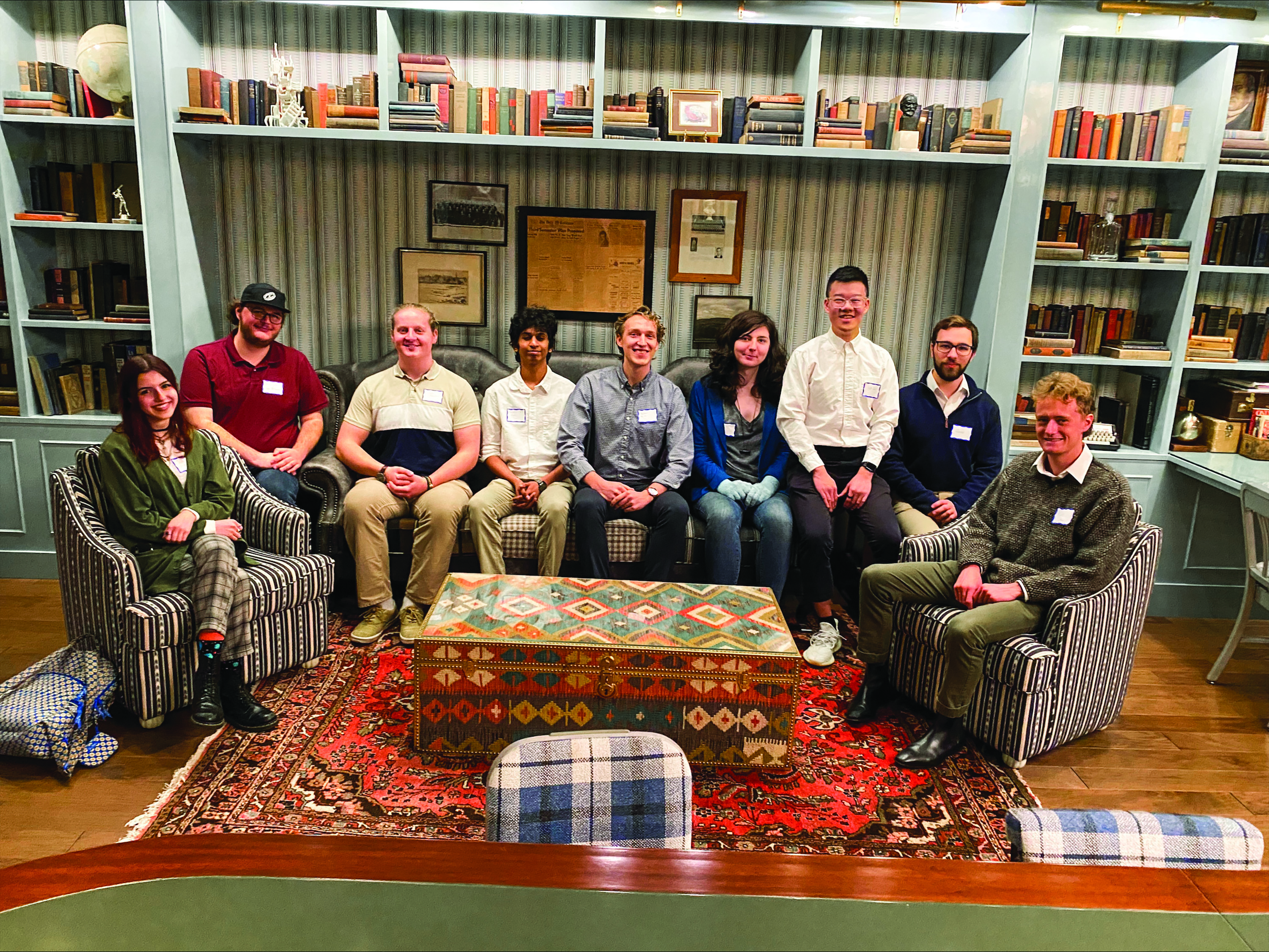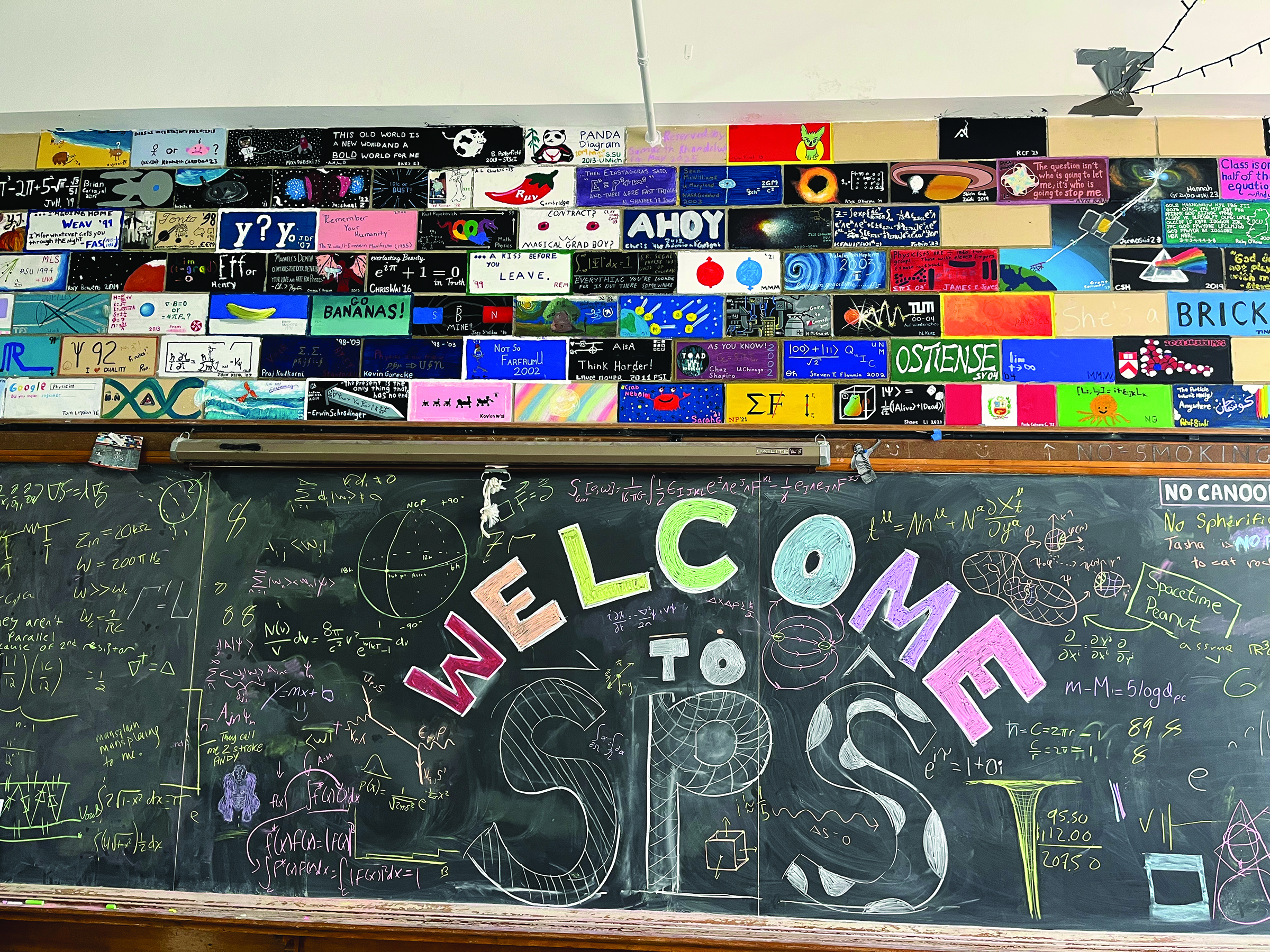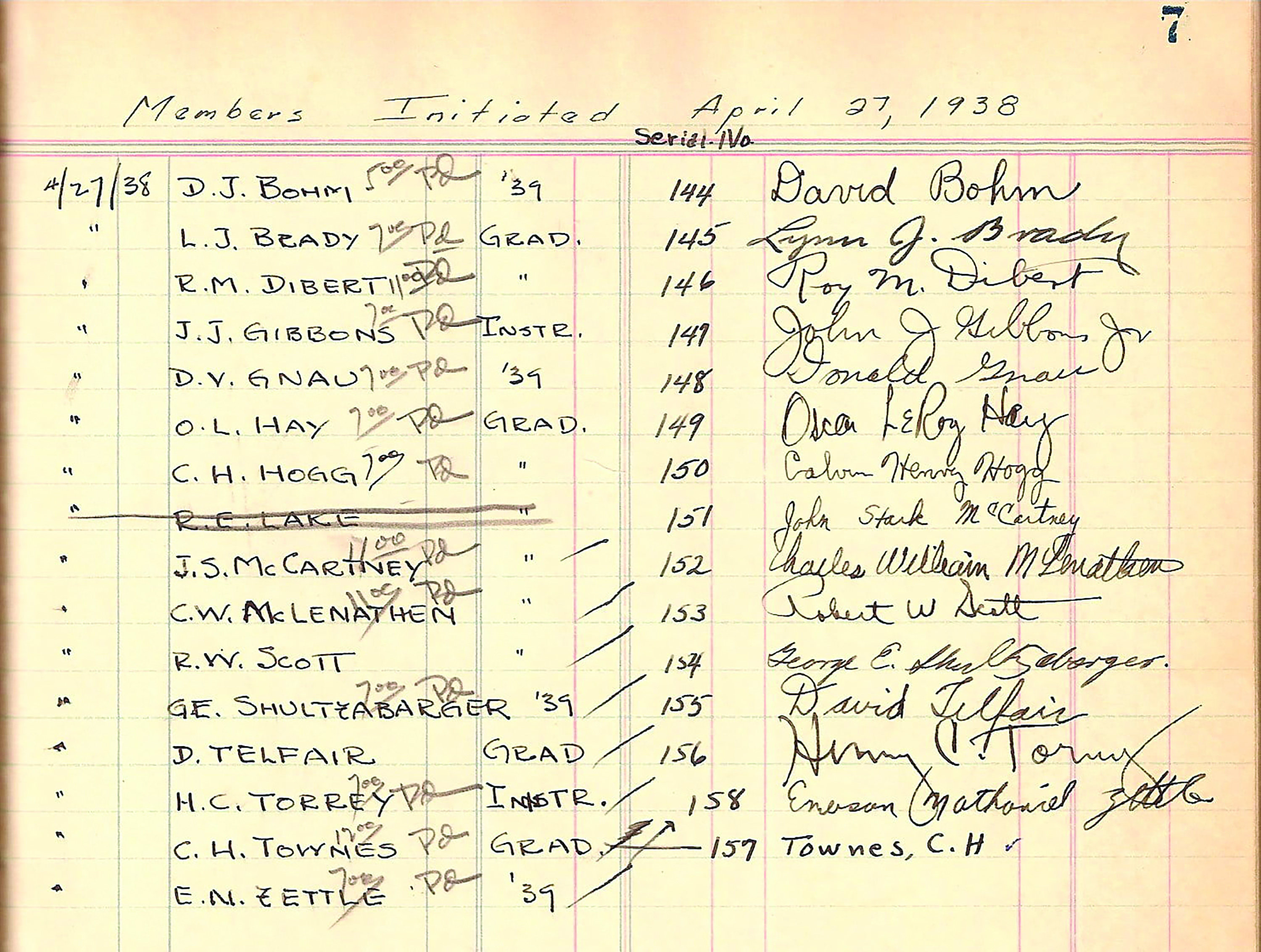The Gamma Chapter: 98 Years of Sigma Pi Sigma at Penn State
Fall
2023
Feature
The Gamma Chapter: 98 Years of Sigma Pi Sigma at Penn State
Kendra Redmond, Editor
5-feature-PSU4-ShelterIsland.jpg
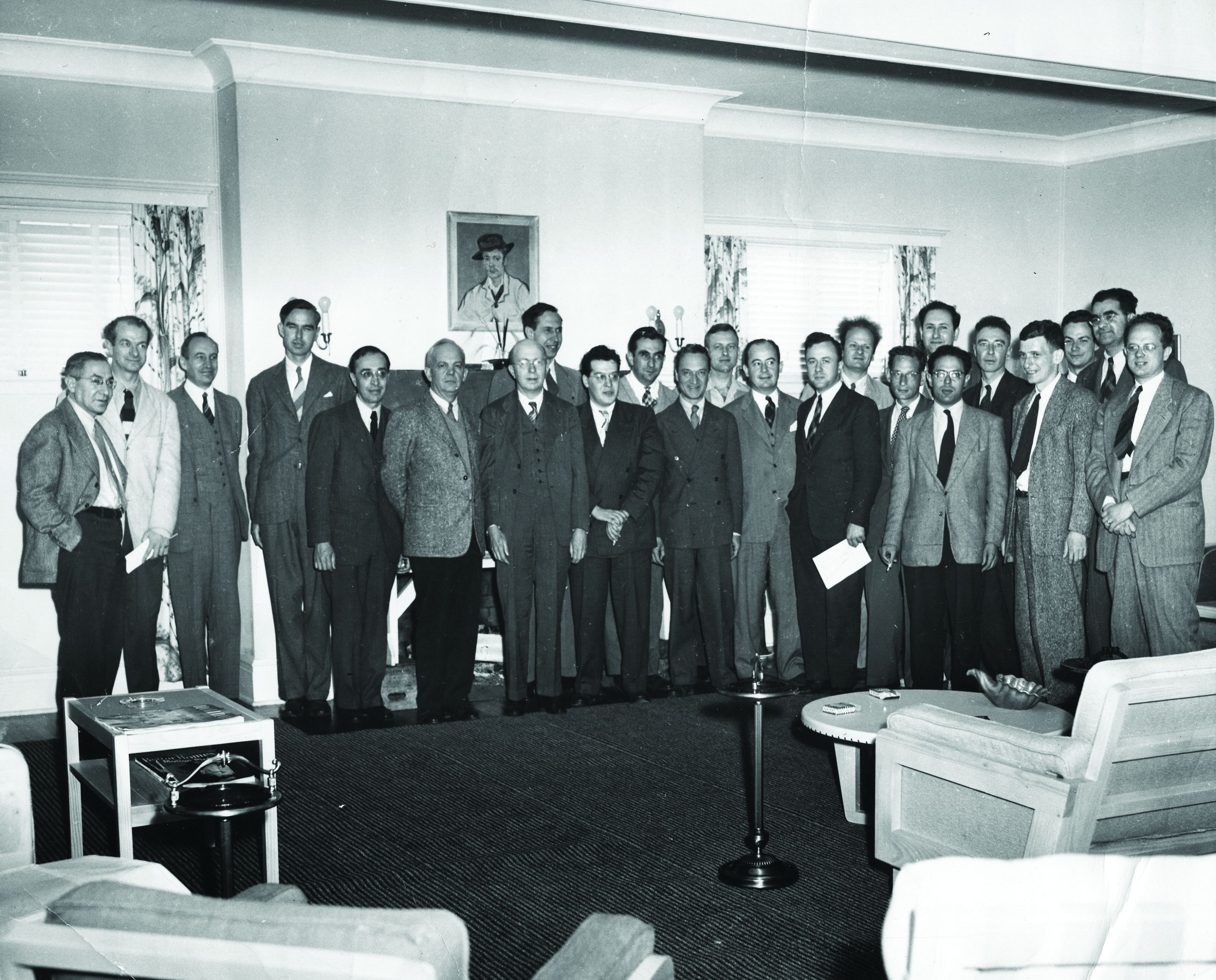
Shelter Island Conference participants pose for photograph in June 1947. From left to right: I. I. Rabi, L. C. Pauling, J. H. Van Vleck, W. E. Lamb, G. Breit, D. A. MacInnes, K. K. Darrow, G. E. Uhlenbeck, J. S. Schwinger, E. Teller, B. B. Rossi, A. T. Nordsieck, J. Von Neumann, J. A. Wheeler, H. A. Bethe, R. Serber, R. E. Marshak, A. Pais, J. R. Oppenheimer, D. Bohm, R. P. Feynman, V. F. Weisskopf, H. Feshbach. Credit: AIP Emilio Segrè Visual Archives, Marshak Collection.
When Richard Robinett became director of undergraduate studies for the Penn State University (PSU) physics department in the early 2000s, the Sigma Pi Sigma chapter was struggling. He revived the chapter in 2003, and it has held an induction ceremony every year since, including during the challenging, pandemic-induced times of “remote everything.” During each of these inductions, the chapter revisits the legacies of two of its earliest and most influential members.
The Penn State chapter is among the oldest in the society, younger only than the alpha chapter at Davidson College (1921) and the beta chapter at Duke University (1925). It became the gamma chapter thanks to Marsh W. White, then a graduate student in physics at Penn State.
“I’d been dreaming of some sort of good society for the physicists,” White recalled in a 1996 interview recorded shortly after his 100th birthday.1 When he saw a brief mention in Nature that Sigma Pi Sigma had been established at Davidson College, his eyes lit up.
“I right away got in touch with them, and very quickly we sent in a petition and got an acceptance to establish a chapter at Penn State,” he said. That was in 1926. White would go on to become the first person to receive a PhD at Penn State University—in any field—and become a physics professor there.
5-feature-PSU2-White.jpg
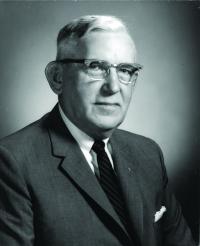
Marsh W. White circa 1954.
Credit: AIP Emilio Segrè
Visual Archives.
In 1975, the Society of Physics Students established the Marsh W. White Award to support SPS chapter outreach events. The award has funded hundreds of SPS chapter outreach projects, with several new ones added each year.
5-feature-PSU1-charter.jpg
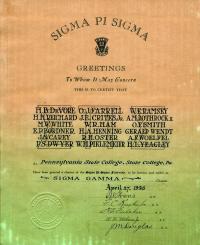
The original charter of Penn
State's Sigma Pi Sigma chapter,
dated 1926. Marsh White's
name appears third in the
first column. Scan courtesy
of Richard Robinett.
“[Bohm] was one of the participants at the 1947 Shelter Island Conference, which led to many advances in quantum field theory, especially QED,” says Robinett. Today, the PSU physics department recognizes the best all-around student each year with the David Bohm Award.
As students have come and gone from PSU’s Sigma Pi Sigma and SPS chapters through the years, each leaves their own legacy. Many have opted to leave a visual legacy, too—since before Robinett joined PSU as a physics professor in 1986, graduating SPS members have painted a brick on the wall of the SPS lounge. “Not every SPS member who graduates chooses to paint a brick, but there are many great designs,” Robinett says. As the 1940s-era building prepares for renovations, the chapter is preserving all of the designs in a high-resolution format to carry forward. Robinett advised PSU’s Sigma Pi Sigma and SPS chapters for 20 years, up until his retirement in 2023. “I’m very proud of the achievements of all of our physics undergraduates over the last 20 or more years that I’ve been working with them, and especially the SPS members who can juggle coursework, research, and departmental community activities,” he says.Robinett fondly recalls the time his wife, an ordained minister, performed the wedding of two alums who had been SPS officers. Half of the venue was filled with former physics majors, some of whom had traveled across the country to attend. “That type of community, fellowship, and professional networking is a great example of what SPS has done and can continue to do,” he says.
References
- The interview with Marsh White was recorded in celebration of the 75th anniversary of Sigma Pi Sigma and played at the Diamond Jubilee, the 1996 Physics Congress. It’s available on the SPS YouTube channel at youtube.com/watch?v=4eyRu_QrRXg.
- Bohm’s signature appears in the chapter’s induction book alongside that of Charles H. Townes, who was visiting from the Duke University chapter for the ceremony. Townes would later earn a 1964 Physics Nobel Prize for his work on lasers.
Marsh W. White Awards
SPS awards of up to $500 are available for chapter programs or events that promote an interest in physics or astronomy among students or the general public. Applications for the Marsh White Award are due November 15. Learn more and read about past award-winning projects at spsnational.org/awards/marsh-white.

